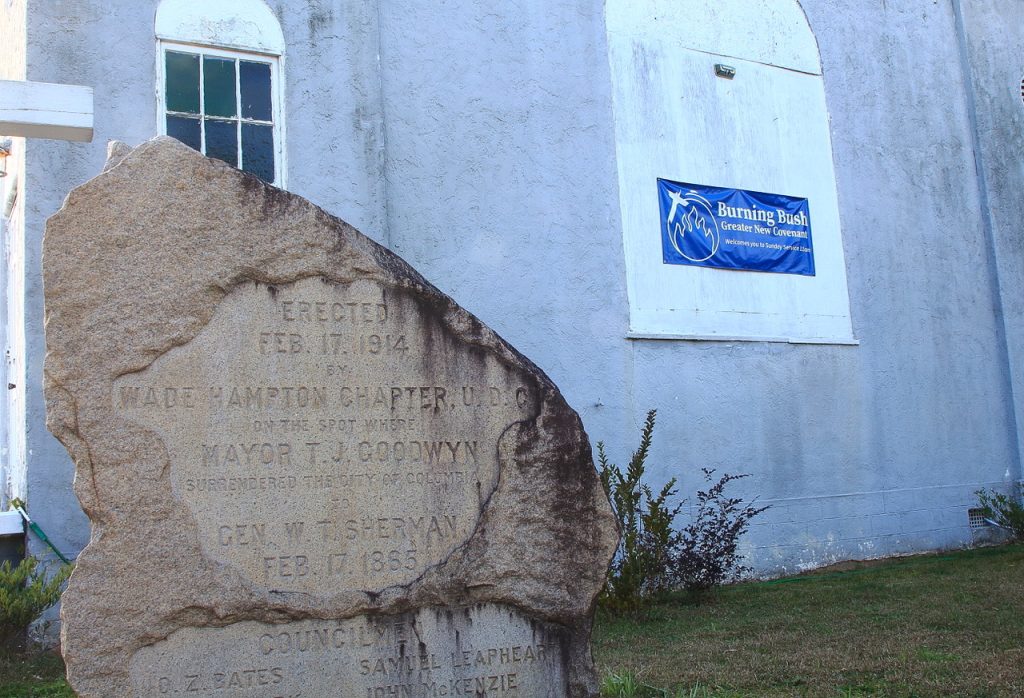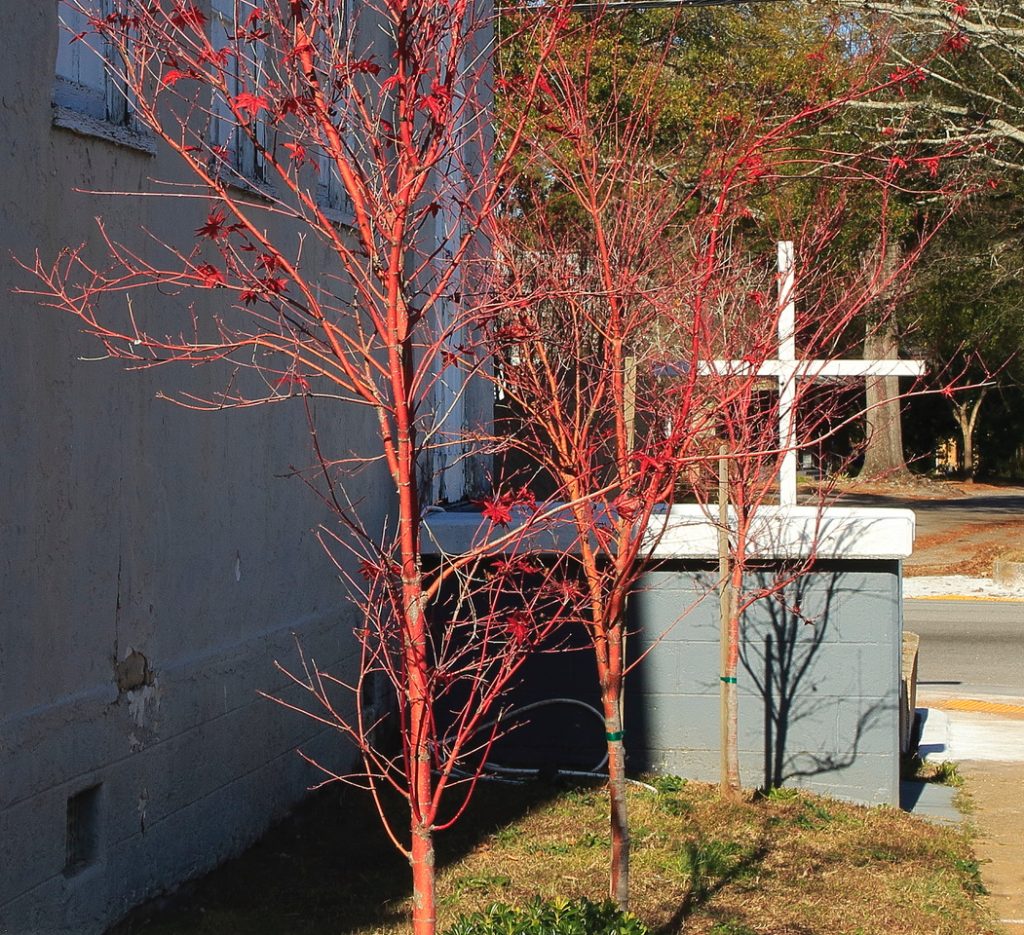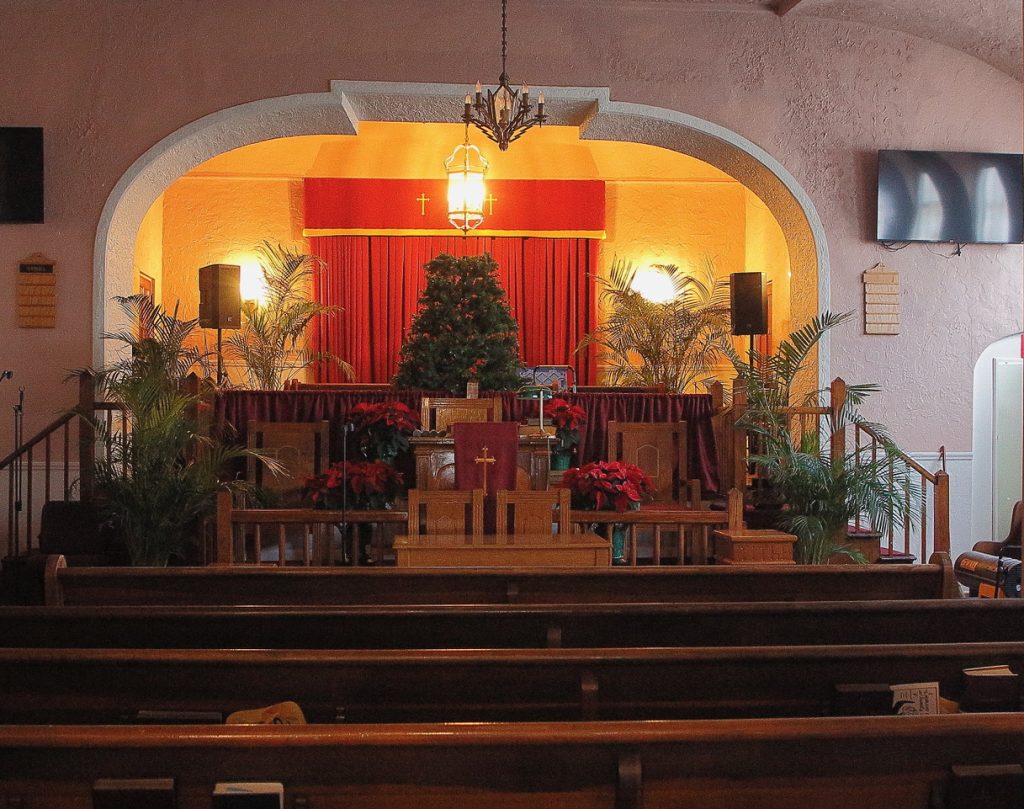Surprise At Surrender Rock
April 3, 2024By Tom Poland
A Sunday before Christmas it was. With the gifts all wrapped, I had a bit of time. I wanted to see the monument where Mayor T.J. Goodwyn surrendered Columbia to Sherman on February 17, 1865. I set out for the intersection of River Drive and Beaufort Street to find “Surrender Rock.” Somehow I missed it. I turned around and there it was to my left in shadows, a tan slab erected February 17, 1914, by the Wade Hampton, United Daughters of the Confederacy. Just in time for the 50th year since Sherman roared through.
I parked behind a white car similar to mine, got out, and opened my liftgate to get my camera equipment. I left the liftgate up and began photographing the monument, remembering what I had read about the burning of Columbia and its various versions. As I photographed Surrender Rock and the church behind it, a man came down the sidewalk carrying a stack of boxes. He mistook my car for his. Perhaps the boxes obscured his vision.

Surrender Rock sits mere feet from the church.
“What’s your name, sir,” I asked.
“David Bowiie. That’s my name, for real. The other David Bowie’s name is David Robert Jones. I have two ‘Is.’ I see real good,” he said forking two fingers at his eyes.
What an encounter. Here I am looking to photograph that stone slab with the date of Columbia’s burning chiseled into it, and I meet David Bowiie with his two “eyes.” Just beyond him stood three trees painted red. Maples. Each stubbornly clung to a few leaves painted red also.

Burning maples.
Mr. Bowiie pointed out a house across the street. “That’s where the surrender actually took place.” So, Surrender Rock, perhaps, stood on the wrong site. Well, it was just a matter of yards.
That church. Burning Bush New Covenant Missionary Baptist Church sat a few feet behind Surrender Rock. This Bowiie, the real Bowiie, was working in his church, helping to get ready for a Christmas event that evening. As we talked, those red maples held my eye. Then it hit me. That red paint, they were burning bushes, as in the Bible where a conflagration doesn’t consume the burning bush’s leaves.
Burning bushes and a burning city—Holy Bible say hello to the American Civil War. Sherman denied burning the city, attributing it to Confederates who burned cotton bales on a windy day. Maybe so, but would the city have burnt if Sherman hadn’t come through? I don’t think so. I had read that Union soldier diaries mentioned that Sherman intended to make the city that started all the trouble pay a heavy price.

The sanctuary.
Mr. Bowiie asked if I wanted to see the sanctuary. He graciously let me photograph its red drapes, warm wooden pews, Christmas tree, four poinsettias, and three gold crosses. Gold. My mind jumped to Civil War memories passed down to my mother’s father in Lincoln County, Georgia. Three months after Sherman captured Columbia, marauders, deserters, and a ragtag band of drifters robbed the Confederate gold train minutes from where my mother grew up. My grandfather’s ancestors told him robbers hid the gold in a creek.
Did they? I wondered, too, did this real David Bowiie with the two “eyes” sing in the sanctuary standing so close to Surrender Rock. Perhaps he sang “Rock of Ages?” Perhaps he sang “I Surrender All?”
And then a few titles of the Ziggy Stardust Bowie’s work came to me … “Rebel Rebel” … “Ashes to Ashes” … and “Changes,” titles apropos to the setting, all things considered. Here at the intersection of River Drive and Beaufort Street, another intersection took place in my mind, that of war, Sunday school, preaching, choirs, and a rock ‘n’ roll legend.
A monument, burning bushes, and David Bowiie and David Bowie—you never know what’s waiting down the road. In this case, it turned into an odd juxtaposition of memories thrown together by the brain’s unforeseeable alchemy.
Georgia native Tom Poland writes a weekly column about the South, its people, traditions, lifestyle, and culture and speaks frequently to groups in the South. Governor Henry McMaster conferred the Order of the Palmetto upon Tom, South Carolina’s highest civilian honor, stating, “His work is exceptional to the state.” Poland’s work appears in books, magazines, journals, and newspapers throughout the South.
Visit Tom’s website at www.tompoland.net
Email him at [email protected]


















